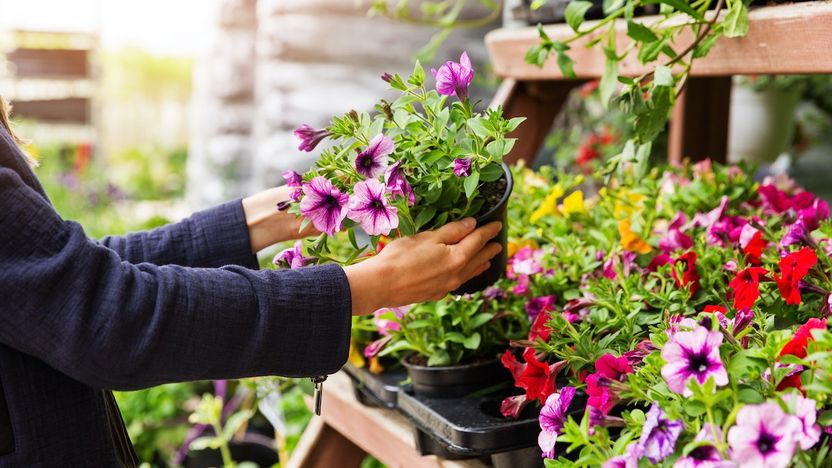When it comes to gardening, one of the most important decisions you’ll make is selecting the right plants. Your choice of plants can determine the success and beauty of your garden. But how do you choose the perfect plants for your unique garden space? In this article, we’ll explore key considerations and provide valuable insights to help you make the best choices.
How do I choose a plant?
Selecting the right plants starts with understanding your garden’s specific conditions and your personal preferences. Here are some steps to help you choose the ideal plants:
- Assess Your Garden: Before anything else, evaluate your garden space. Consider factors like sunlight, soil type, and climate. Different plants have different requirements, so understanding your garden’s conditions is essential.
- Determine Your Goals: What do you want from your garden? Are you aiming for a lush, colorful landscape, a vegetable garden, or a low-maintenance oasis? Knowing your goals will guide your plant choices.
- Consider Your Preferences: What types of plants do you love? Do you have favorite colors or scents? Your garden should reflect your personal taste and style.
- Research Plant Varieties: Learn about different plant species and their characteristics. You can find plenty of information online and at your local nursery. Take notes on the plants that catch your eye.
- Seek Local Advice: Local gardening experts and fellow gardeners can offer valuable insights. They know which plants thrive in your area and can provide recommendations.
Which plant is best for the garden?
The “best” plant for your garden depends on your garden’s unique conditions and your preferences. Some popular options include:
- Perennials: Perennials are plants that come back year after year. They’re known for their longevity and low maintenance. Examples include peonies, hostas, and daylilies.
- Annuals: Annual plants complete their life cycle in one year. They’re ideal for adding seasonal color. Marigolds, petunias, and zinnias are popular annuals.
- Native Plants: Native plants are well-suited to your region’s conditions and provide essential habitat for local wildlife. Research native species for your area.
- Vegetables and Herbs: If you want a kitchen garden, consider vegetables and herbs like tomatoes, basil, and rosemary.
- Trees and Shrubs: Trees and shrubs can add structure and height to your garden. Options range from flowering dogwoods to evergreen pines.
What is the most important thing in a garden?
While selecting the right plants is crucial, the most important thing in a garden is nurturing a healthy ecosystem. To achieve this:
- Soil Health: Start with well-prepared soil. Amend it with organic matter to improve fertility and drainage.
- Proper Watering: Give your plants the right amount of water. Overwatering and underwatering can harm them.
- Sunlight: Ensure that your plants receive the appropriate amount of sunlight according to their needs.
- Pest and Disease Management: Keep an eye out for pests and diseases. Early detection and treatment are key to a thriving garden.
- Biodiversity: Encourage biodiversity by planting a variety of species. This can help maintain a balanced ecosystem and attract beneficial insects.
Which plants are best to grow at home?
Growing plants at home can be a rewarding experience. Here are some plant options that are well-suited for home gardening:
- Herbs: Herbs like basil, mint, and chives are perfect for small spaces and provide fresh flavors for your kitchen.
- Succulents: Succulents are low-maintenance and come in a wide variety of shapes and colors.
- Indoor Tropical Plants: If you have a well-lit indoor space, consider plants like snake plants, peace lilies, or pothos.
- Balcony Plants: For apartment dwellers, balcony-friendly plants like geraniums, pansies, and balcony tomatoes are great choices.
- Windowsill Plants: Compact herbs and small flowering plants can thrive on a sunny windowsill.
Which plant is very useful?
One incredibly useful plant is the Aloe Vera. Aloe Vera has numerous benefits, from soothing skin irritations to purifying the air. It’s easy to grow and is a great addition to any home.
What is the most popular plant?
It’s challenging to pinpoint a single “most popular” plant, as preferences vary widely. However, some plants consistently rank among the favourites of gardeners worldwide, including roses, lavender, and sunflowers.
What plants do you use every day?
Plants play an essential role in our daily lives, even if we don’t always realize it. We rely on plants for food, medicine, and materials. Common everyday plants include:
- Wheat and Corn: Grains like wheat and corn are the basis for many of our staple foods.
- Tea and Coffee Plants: Many people start their day with a cup of tea or coffee, both derived from plants.
- Cotton: Cotton plants provide the fibers used to make clothing and textiles.
- Medicinal Herbs: Plants like aloe vera, chamomile, and lavender have medicinal properties.
- Fruit Trees: Apples, bananas, oranges, and more are fruits we consume daily.
What plant is the most beautiful?
Beauty is subjective, but some plants are widely regarded as stunning due to their colors, shapes, or fragrance. Some examples include:
- Orchids: Orchids are known for their exquisite and intricate flowers.
- Roses: Roses are celebrated for their classic beauty and variety of colors.
- Cherry Blossoms: Cherry blossom trees are famous for their ethereal pink blooms in the spring.
Who is the most beautiful plant in the world?
While beauty is subjective, one plant often celebrated for its extraordinary beauty is the orchid. With its diverse and captivating array of shapes and colours, orchids are often considered some of the most beautiful plants in the world.
In conclusion, choosing the right plants for your garden involves careful consideration of your garden’s conditions, your goals, and your personal preferences. By following these guidelines and exploring various plant options, you can create a garden that is not only beautiful but also sustainable and tailored to your needs. Remember that the most beautiful plant is the one that brings you joy and adds to the natural beauty of your surroundings.
